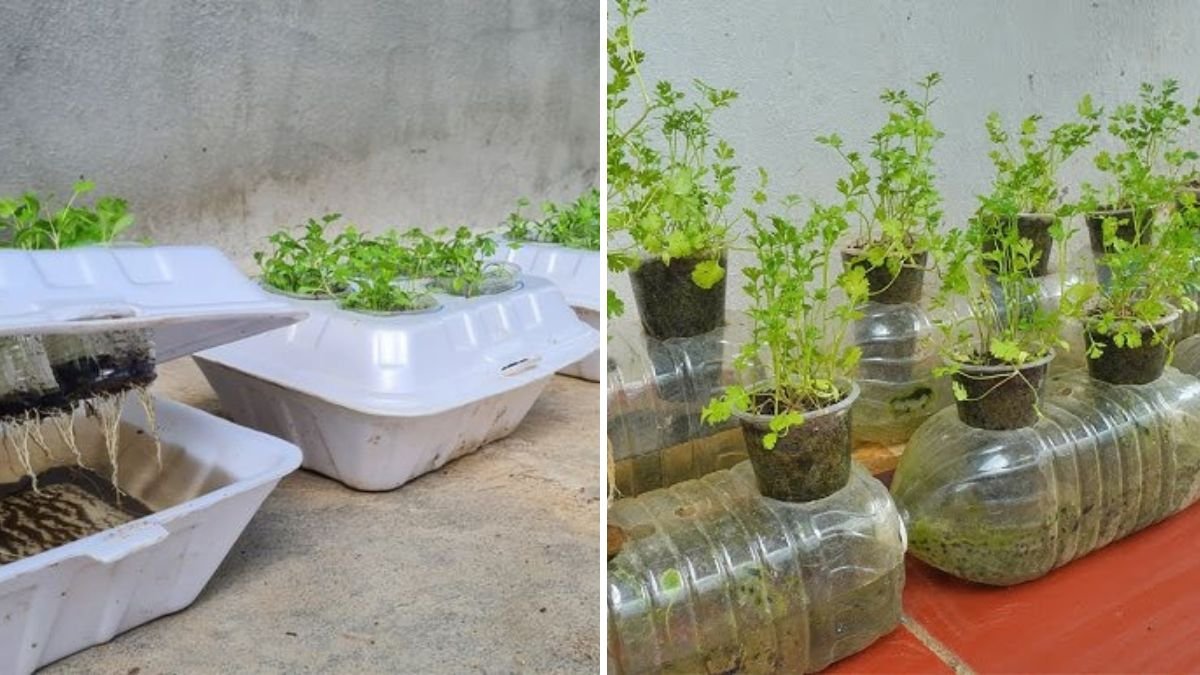Coriander, also known as cilantro, is a popular herb used in cuisines worldwide. Its fresh leaves add flavor to salads, curries, and garnishes, while its seeds are widely used as a spice. But did you know you can grow coriander easily at home using a simple Styrofoam box and water? This method is not only cost-effective but also ideal for small spaces, such as balconies, kitchen counters, or urban gardens. In this guide, we’ll show you how to grow coriander from seed in a Styrofoam box with water, step by step, for a fresh and continuous supply of this versatile herb.
Why Grow Coriander in a Styrofoam Box
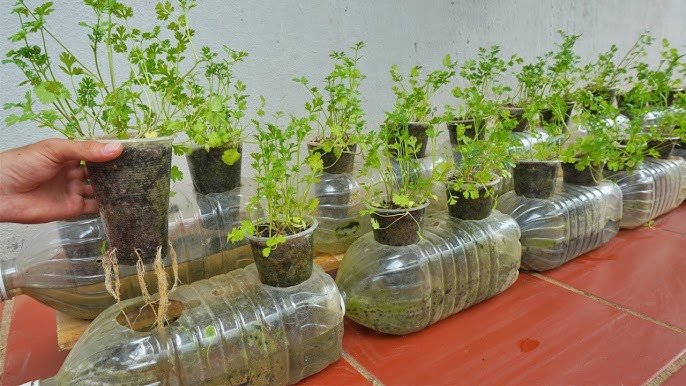
Growing coriander in a Styrofoam box with water is a form of hydroponic gardening, which offers many advantages:
- Space Efficiency: Perfect for small apartments and balconies.
- Cost-Effective: Uses a cheap Styrofoam box and minimal materials.
- Faster Growth: Water-based growth encourages quicker sprouting and leaf production.
- Clean and Pesticide-Free: No soil means fewer pests and diseases.
- Easy Maintenance: Minimal watering, fertilizing, and monitoring required.
This method allows even beginners to grow fresh coriander quickly without traditional soil-based gardening.
Step 1: Materials Needed
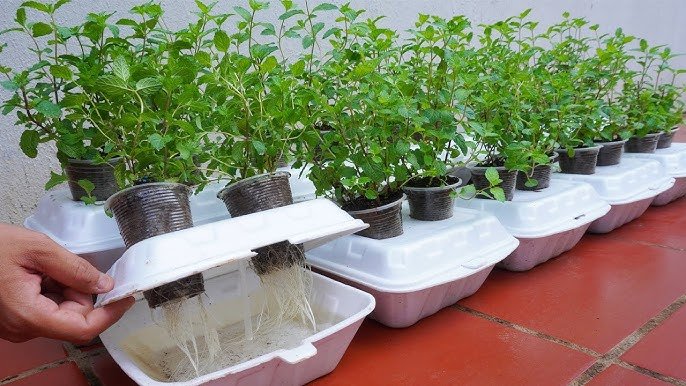
To start growing coriander in a Styrofoam box, gather the following materials:
- Styrofoam Box: Any size works, but a depth of 6–8 inches is ideal.
- Seeds: Choose fresh coriander seeds or pre-soaked seeds for faster germination.
- Water: Clean, preferably filtered or dechlorinated water.
- Growing Medium (Optional): Small pebbles, sponge, or coco coir for seed support.
- Fertilizer (Optional): Liquid organic fertilizer for enhanced growth.
- Spray Bottle: To mist seeds and seedlings.
- Plastic Wrap or Cover (Optional): To maintain humidity during germination.
With these simple materials, you can create a mini hydroponic garden at home.
Step 2: Preparing the Styrofoam Box
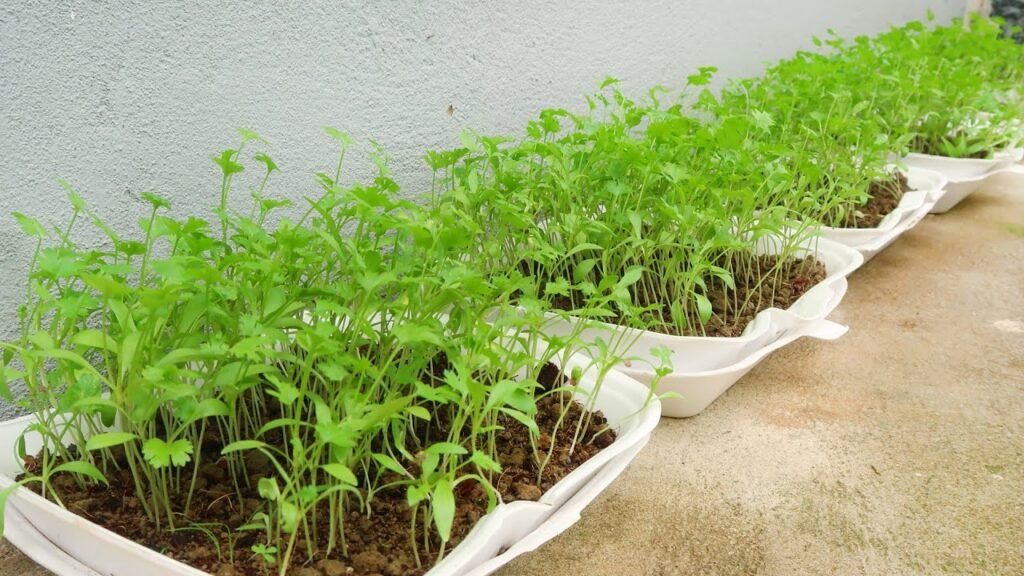
The Styrofoam box acts as both a container and water reservoir for coriander:
- Clean the Box: Rinse thoroughly to remove dust or residues.
- Make Holes (Optional): If you want aeration, make small holes at the bottom.
- Add Growing Medium: Fill the box with pebbles, sponge, or coir to hold seeds in place.
- Fill with Water: Add enough water so the medium is moist but not submerged.
A properly prepared Styrofoam box ensures that seeds remain hydrated and have enough space for root growth.
Step 3: Sowing Coriander Seeds
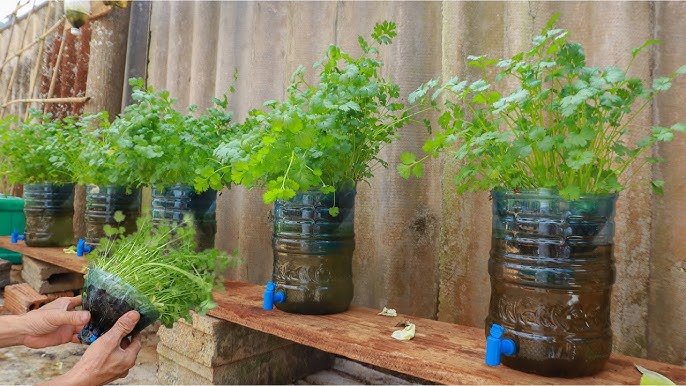
Sowing seeds correctly is crucial for uniform germination:
- Soak Seeds (Optional): Soak coriander seeds for 6–8 hours to speed up germination.
- Spread Seeds: Evenly distribute seeds on the growing medium or surface.
- Lightly Cover Seeds: If using pebbles or sponge, sprinkle a thin layer over the seeds.
- Mist with Water: Keep seeds moist using a spray bottle to prevent them from drying out.
- Cover Box (Optional): Use plastic wrap to maintain humidity during the first 3–4 days.
With proper sowing, coriander seeds typically sprout within 7–10 days.
Step 4: Providing Optimal Conditions for Growth
Coriander thrives under specific conditions, even in a Styrofoam box:
- Sunlight: Place the box in a location that receives 4–6 hours of indirect sunlight daily.
- Temperature: Ideal growth temperature is between 18–25°C (65–77°F).
- Humidity: Maintain moisture but avoid waterlogging.
- Air Circulation: Ensure airflow to prevent mold or fungal growth.
By providing optimal conditions, your coriander plants grow faster and produce healthy leaves.
Step 5: Watering and Nutrient Management
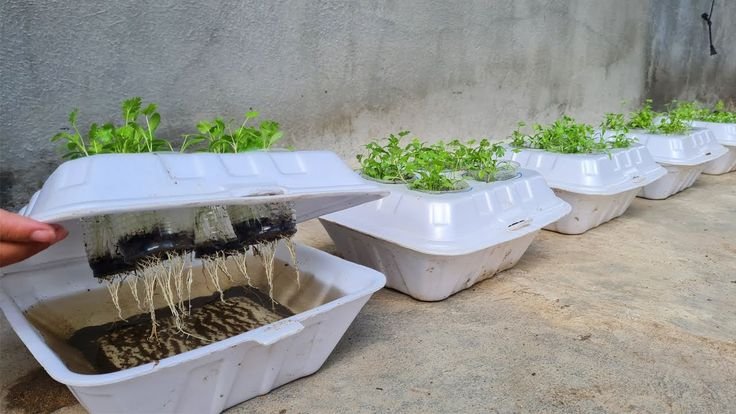
Water management is critical in a water-based coriander system:
- Maintain Water Level: Keep the medium moist at all times. Do not let it dry out.
- Change Water: Refresh water every 5–7 days to prevent stagnation.
- Fertilizer (Optional): Add liquid organic fertilizer diluted to half-strength every 2–3 weeks for better growth.
Consistent water and nutrient supply ensures lush, green coriander leaves.
Step 6: Managing Pests and Diseases
Even in a hydroponic setup, coriander can face some pests or fungal issues:
- Common Pests: Aphids or small insects may appear; spray with neem oil or insecticidal soap.
- Fungal Growth: Prevent mold by avoiding excessive moisture and ensuring proper airflow.
- Leaf Maintenance: Remove yellow or dead leaves to maintain plant health.
A clean setup and regular inspection help maintain a healthy, pest-free coriander garden.
Step 7: Harvesting Coriander
Coriander grows quickly, and proper harvesting encourages continuous production:
- First Harvest: Leaves are ready to harvest in 3–4 weeks after germination.
- How to Harvest: Snip outer leaves using scissors, leaving inner leaves intact for regrowth.
- Frequency: Regular harvesting every 7–10 days promotes new growth.
- Storage: Fresh leaves can be used immediately, or stored in the refrigerator wrapped in a damp paper towel.
With consistent harvesting, a Styrofoam box can provide a continuous supply of fresh coriander throughout the season.
Step 8: Tips for a Successful Styrofoam Box Coriander Garden
- Start with Quality Seeds: Fresh, untreated seeds ensure better germination.
- Maintain Moisture: Seeds and seedlings require constant moisture without waterlogging.
- Provide Adequate Light: Indirect sunlight or grow lights support strong leaf growth.
- Use Organic Fertilizers: Safe for both indoor and balcony gardens.
- Rotate Plants: Avoid growing coriander continuously in the same box to prevent nutrient depletion.
- Clean Regularly: Keep the box and medium clean to avoid algae and mold.
Following these tips will help you grow healthy, flavorful coriander with minimal effort.
Benefits of Growing Coriander in a Styrofoam Box with Water
- Low-Cost and Recyclable: Styrofoam boxes are cheap and reusable.
- Space-Efficient: Perfect for indoor gardening and urban living.
- Pesticide-Free: No soil reduces exposure to pests and diseases.
- Faster Growth: Water-based growth accelerates seed germination and leaf development.
- Continuous Harvest: Regular harvesting promotes constant production of fresh coriander.
This method is ideal for anyone who wants fresh, homegrown herbs without a traditional garden.
Conclusion
Growing coriander in a Styrofoam box with water is a simple, effective, and sustainable gardening method. By following these steps—from preparing the box, sowing seeds, and maintaining proper water and nutrient levels to harvesting regularly—you can enjoy fresh, flavorful coriander year-round.
This approach is especially beneficial for urban gardeners, beginners, or anyone with limited space, proving that you don’t need a large garden to grow fresh herbs at home. With patience and care, your Styrofoam box coriander garden can become a continuous source of healthy, aromatic leaves that enhance your cooking and add a touch of green to your living space.
Start your hydroponic coriander journey today and experience the ease, efficiency, and satisfaction of growing herbs at home!
